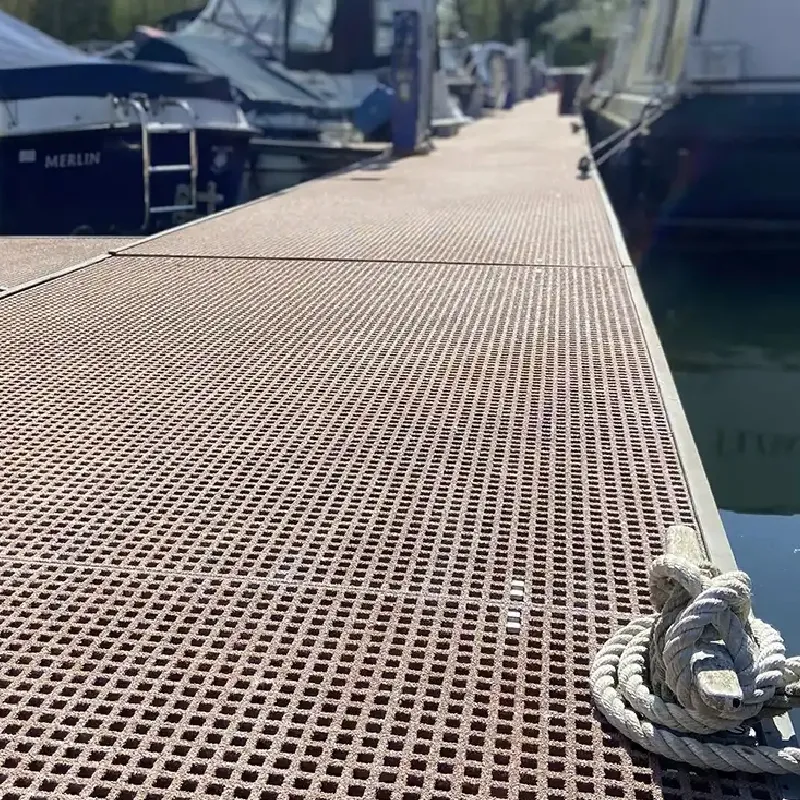loading...
- No. 9, Xingyuan South Street, Dongwaihuan Road, Zaoqiang County, Hengshui, Hebei, China
- admin@zjcomposites.com
- +86 15097380338
- Welcome to visit our website!
fibre reinforced plastic grating
Fiber Reinforced Plastic Grating A Modern Solution for Various Applications
In recent years, the demand for innovative materials that provide strength, durability, and resistance to environmental factors has led to the increased use of fiber reinforced plastic (FRP) grating across various industries. FRP grating, a composite material made from a polymer matrix reinforced with fibers, offers a lightweight yet sturdy alternative to traditional metal and concrete grating. This article explores the properties, advantages, applications, and future potential of fiber reinforced plastic grating.
One of the most notable properties of FRP grating is its exceptional strength-to-weight ratio. This property makes it particularly appealing for industries where reducing weight without compromising strength is critical. Additionally, FRP is highly resistant to corrosion, which is a significant advantage in harsh environments such as chemical plants, marine applications, and wastewater treatment facilities. Unlike metal alternatives, which can corrode and degrade over time, FRP grating maintains its structural integrity and appearance, reducing maintenance costs and increasing the lifespan of installations.
Fiber Reinforced Plastic Grating A Modern Solution for Various Applications
One significant area of application for FRP grating is in the industrial sector. Manufacturing facilities often require flooring solutions that can withstand heavy loads while resisting harsh chemicals. FRP grating fulfills this requirement, providing a reliable platform for workers, machinery, and materials. In addition, its lightweight nature simplifies installation processes, ultimately lowering labor costs and minimizing downtime.
fibre reinforced plastic grating

FRP grating also plays a crucial role in the construction of public infrastructures, such as bridges and walkways. The lightweight characteristic allows for easier transport and assembly, which significantly reduces both construction time and expenses. Its corrosion resistance offers an advantage in environments where exposure to moisture and chemicals is common, ensuring long-term functionality with minimal maintenance.
The marine industry benefits significantly from the utilization of FRP grating as it can withstand the demanding conditions of coastal and inland waterways. Shipyards, docks, and marinas increasingly rely on FRP materials to construct safe and durable walkways that resist corrosion from saltwater exposure. Moreover, the non-slip surface of FRP grating enhances safety for personnel working in these areas.
Looking forward, the future of fiber reinforced plastic grating appears bright. As more industries recognize the significant benefits of this material, research and development efforts are likely to focus on enhancing its properties and expanding its applications. Innovations in fiber technology and resin formulations may lead to even greater strength, durability, and sustainability features in FRP products.
In conclusion, fiber reinforced plastic grating represents a modern, efficient solution to many challenges faced by diverse industries. With its impressive combination of strength, light weight, corrosion resistance, and aesthetic versatility, FRP grating is poised to play an increasingly vital role in construction, manufacturing, and infrastructure development. As technology advances and awareness grows, the application of FRP grating is sure to expand, paving the way for safer and more resilient environments in the years to come.
-
The Rise of FRP Profiles: Strong, Lightweight, and Built to LastNewsJul.14,2025
-
SMC Panel Tanks: A Modern Water Storage Solution for All EnvironmentsNewsJul.14,2025
-
GRP Grating: A Modern Solution for Safe and Durable Access SystemsNewsJul.14,2025
-
Galvanized Steel Water Tanks: Durable, Reliable, and Ready for UseNewsJul.14,2025
-
FRP Mini Mesh Grating: The Safer, Smarter Flooring SolutionNewsJul.14,2025
-
Exploring FRP Vessels: Durable Solutions for Modern Fluid HandlingNewsJul.14,2025
-
GRP Structures: The Future of Lightweight, High-Performance EngineeringNewsJun.20,2025
